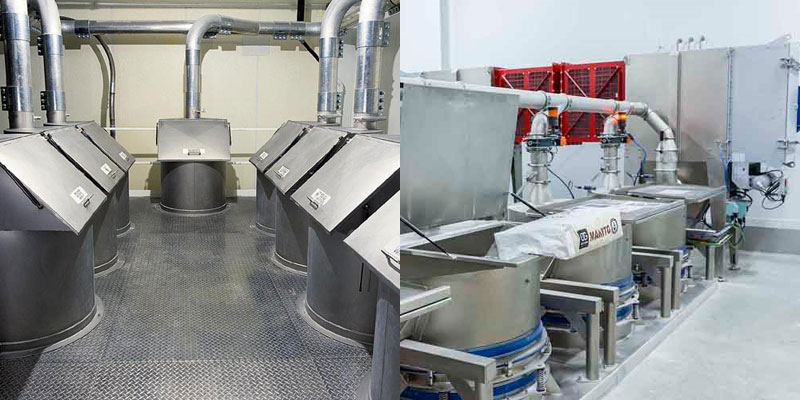As part of its bespoke solution offering, EPP partner Shick Esteve has redesigned its bag discharge station, which features an enhanced dust collection system. It’s available now in the UK and Ireland from exclusive distributor EPP. So, what do you need to know about Shick Esteve and its latest solution?
Why is dust removal important?
Controlling dust in a food factory environment is an increasingly critical issue from both a food safety perspective and a worker health and safety perspective. The Health and Safety Executive identifies flour dust and enzymes containing additives such as amylase as the second most common cause of occupational asthma, as well as a contributory factor to the cause of dermatitis. Exposure can also cause irritation to the eyes and nose, as well as create sanitation concerns and cross-contamination. The Control of Substances Hazardous to Health Regulations 2002 (COSHH) requires employers to “…ensure that exposure is prevented or, where this is not reasonably practicable, adequately controlled.” Any innovation which reduces dust in the atmosphere (and therefore exposure to dust) is a huge benefit to reducing risk arising from exposure to flour and other ingredient dusts.
How has Shick Esteve made dust removal more efficient?
As part of ongoing efforts to improve its products, Shick Esteve studied customer feedback and identified dust management as a key issue. The R&D team analysed dust extraction during the bag emptying process. Following careful inspection and modelling of airflow and dust redirection, Shick Esteve was able to redesign the shape of the equipment so that the dust collection system is significantly enhanced. Shick Esteve redesigned the shape of the bag discharge station, utilising a slightly more conical design, which has led to improved airflow from the opening hatch to the dust collection system. As a result, the dispersion of dust outside the bag discharge station is reduced by 23%.
What are the key benefits?
- Dust reduction
- Food safety
- Protection of operators
- Ergonomics
What means are used to ensure the safety of the process?
Food safety and foreign object removal is ensured by a range of vibrating grids produced by Shick Esteve. First, a simple safety grid protects operators who would have to handle the system. This also prevents certain bag particles, or the bag itself, from falling into the hopper. This safety grid is easily removable when required to carry out cleaning operations. At the same time, integrated vibrating grilles make it possible to carry out sieving, recovering foreign bodies that may be present in the ingredients. These safety and screening grids are integrated into the bag hopper according to the customer’s needs. The grids exist with different meshes ranging from 600μm to 8mm.
What is Shick Esteve’s core business?
Shick Esteve, founded more than 70 years ago, offers automation solutions for bulk storage of ingredients, handling of powder ingredients and metering/dosing of liquids, as well as associated services (installation, commissioning, development). It began working in the industrial bakery sector but has since expanded to include the agri-food sector, which makes up about 50% of its business. It designs and delivers solutions encompassing storage silos, bag emptying stations, dense phase or diluted phase transfer systems, pressure and vacuum, mixing towers and more.
Do they work with subcontractors to design its processes?
Shick Esteve designs almost all the equipment it delivers to customers. It has a production plant in Rians, equipped with a factory and an assembly unit. This means it controls the process throughout –from design drawing board to manufacture – and it has a broad holistic understanding of the food industry.

